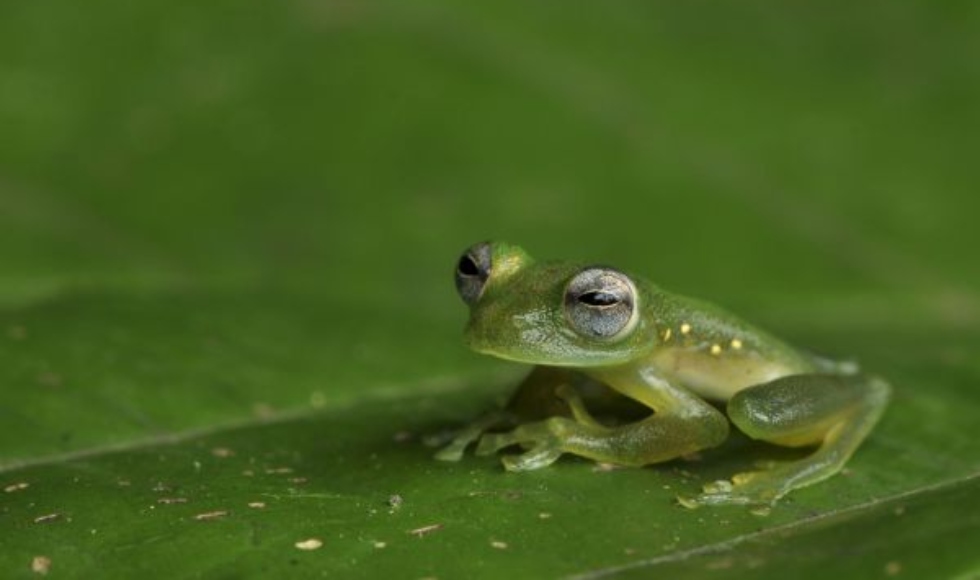Transparent vs translucent.
New research from McMaster University, the University of Bristol, and Universidad de Las Américas Quito, has put the glass frog under the microscope and into computer modelling.
The researchers were able to determine that the frogs’ legs are more translucent than that of the rest of their body. This has the effect of gently blending the green frogs into their largely green backdrops, an appearance called “edge diffusion“, so the frogs don’t stand out like a yellow-and-red sale sign.
In art terms, we might call the effect an ombré , a blending of the hues from light to dark or vice versa. The frog’s legs serve as the transition colour when tucked in to their side as the frog is at rest.
“The frogs are always green but appear to brighten and darken depending on the background. This change in brightness makes the frogs a closer match to their immediate surroundings, which are predominantly made up of green leaves,” says James Barnett, the McMaster researcher.
The frogs also manage to weigh in on the old elementary school debate on whether something is transparent or translucent as well. Transparency, if you forget, is when light is able to pass through something overwhelmingly uninterrupted, such as a standard pane of glass, or through the air. Translucency, meanwhile, allows light to enter, but bounces it around and scattering it before allowing it to escape, which is the case in your sunglasses.
The legs on the frog, then, are translucent, as they still contain some green pigmentation.
Top image: James Barnett, McMaster University.
